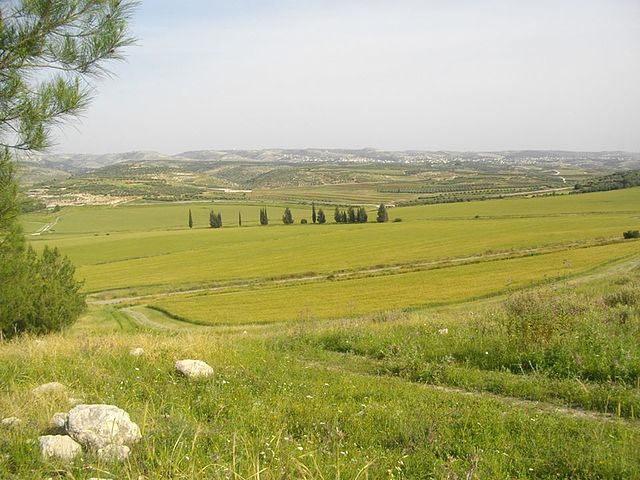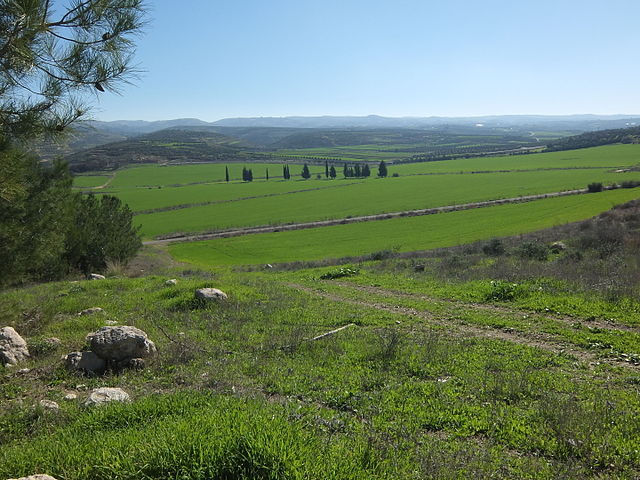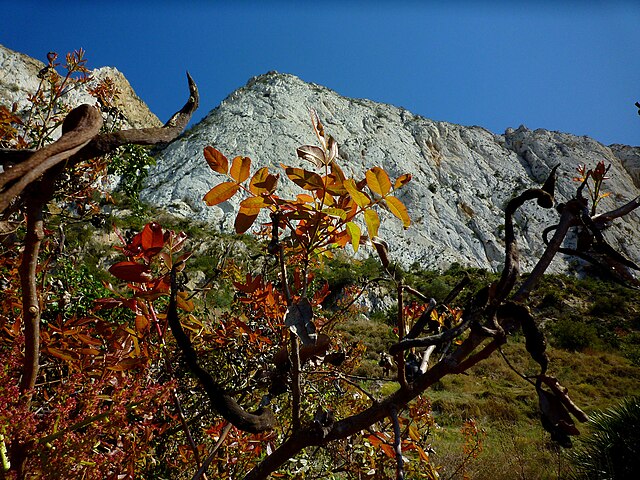The Valley of Elah or Ella Valley, called in Arabic: وادي السنط, Wadi es-Sunt, so-named from its Acacia albida trees, is a long, shallow valley in the Levant best known as the place described in the Hebrew Bible where the Israelites were encamped when David fought Goliath. It is home to several important archaeological sites, including those identified as the ancient towns of Azekah and Socho. Rising up from the valley on its extreme southeast end lies the hilltop ruin Adullam, and on its north lie the ruins of the ancient fortress city of Khirbet Qeiyafa, which is identified with the ancient town of Sha'araim.
Valley of Elah viewed from the top of Tel Azekah
Extension of Elah Valley on its southeastern side, Wadi es Sur
Khirbet Qeiyafa overlooking the Elah Valley
The Valley of Elah after the winter rains, Wadi es Sur
Pistacia terebinthus also called the terebinth and the turpentine tree, is a deciduous shrub species of the genus Pistacia, native to the Mediterranean region from the western regions of Morocco and Portugal to Greece and western and southeastern Turkey. At one time terebinths growing on the eastern shores of the Mediterranean Sea were regarded as a separate species, Pistacia palaestina, but these are now considered to be a synonym of P. terebinthus.
Pistacia terebinthus
Dry fruit of Pistacia terebinthus (MHNT collection).
Aphid Forda formicaria galls on the leaflets.
Pistacia terebinthus in Peñas Blancas, Cartagena (Spain)








